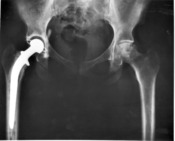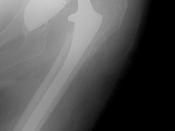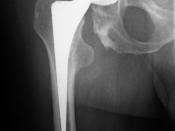Iliofemoral joint is also known as the hip joint. It is the joint between the femur and acetabulum of the pelvis. Its primary function is to support the weight of the body in both static and dynamic postures. There are seven different kinds of movements are possible in the hip joint. There is flexion and extension on the spine and thigh, abduction and adduction of the femur, internal and external rotation of the pelvis, thigh or spine and circumduction of the femur or pelvis. The Iliofemoral joint is important because it enables us to walk and run.
Hip replacement has enabled hundreds of thousands of people to live fuller, more active lives. In 2001 about 165,000 hip joints were replaced in America. But despite their success, hip joint replacements still have drawbacks. Artificial joints and surgical techniques continue to evolve to cause fewer problems, last longer, and more like a healthy natural joint.
Iliofemoral joint replacementThe Iliofemoral joint are formed by the ends of two or more bones connected by tissue called cartilage. Healthy cartilage serves as a protective cushion, allowing smooth, low-friction movement of the joint. When the cartilage becomes damaged by disease or injury, the tissues around the joint become inflamed, causing pain. Even with old age the cartilage wears away, allowing the rough edges of bone to me against each other, causing more pain.
When only some of the joint is damaged, a surgeon may be able to repair or replace just the damaged parts. When the entire joint is damaged a total joint replacement is needed. The replacement involves removing the diseased or damaged parts and replacing with artificial parts. These parts are called prostheses or implants.
The most common reason for having a Iliofemoral joint replaced is osteoarthritis. It breaks down the joint's cartilage. It...


